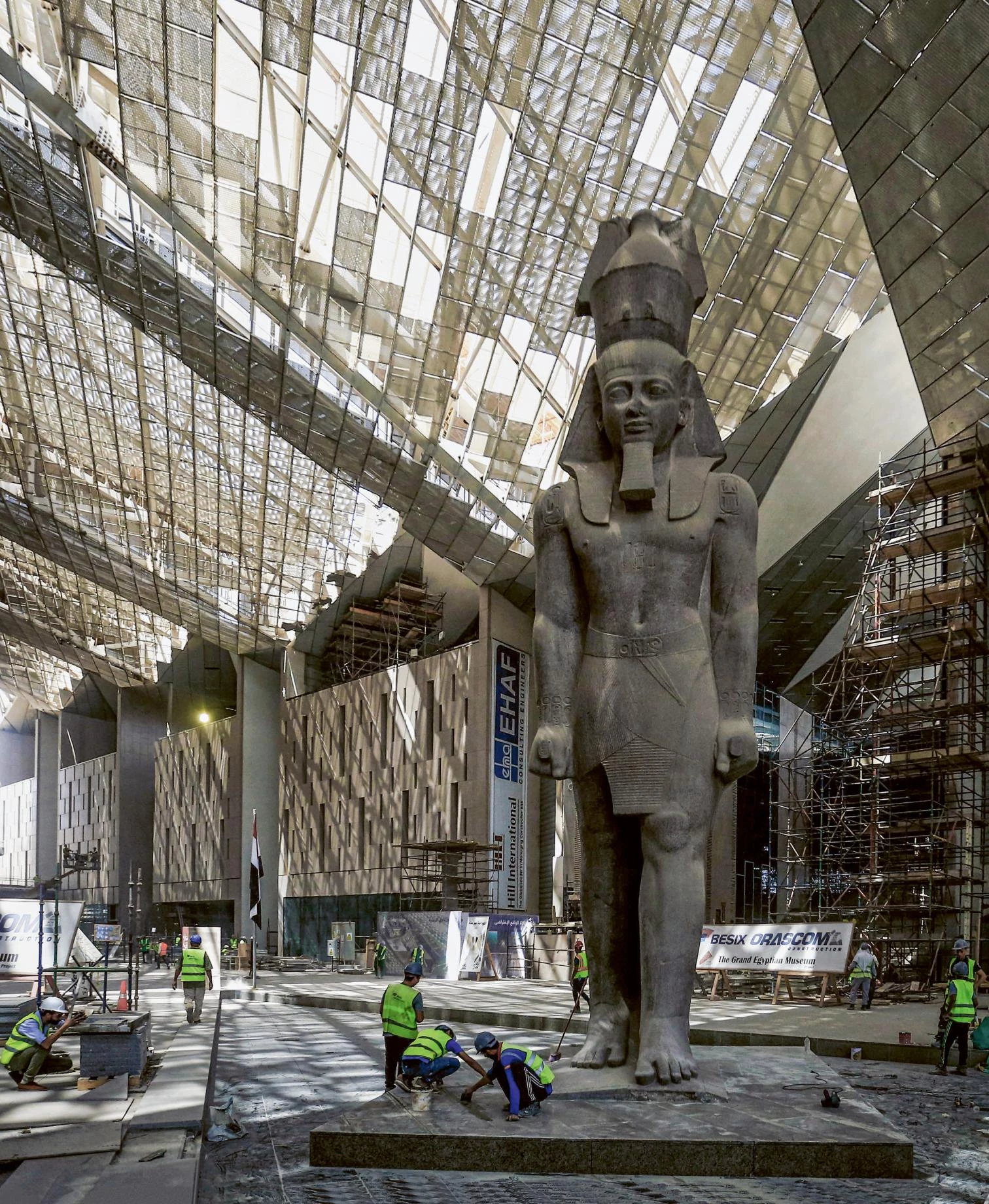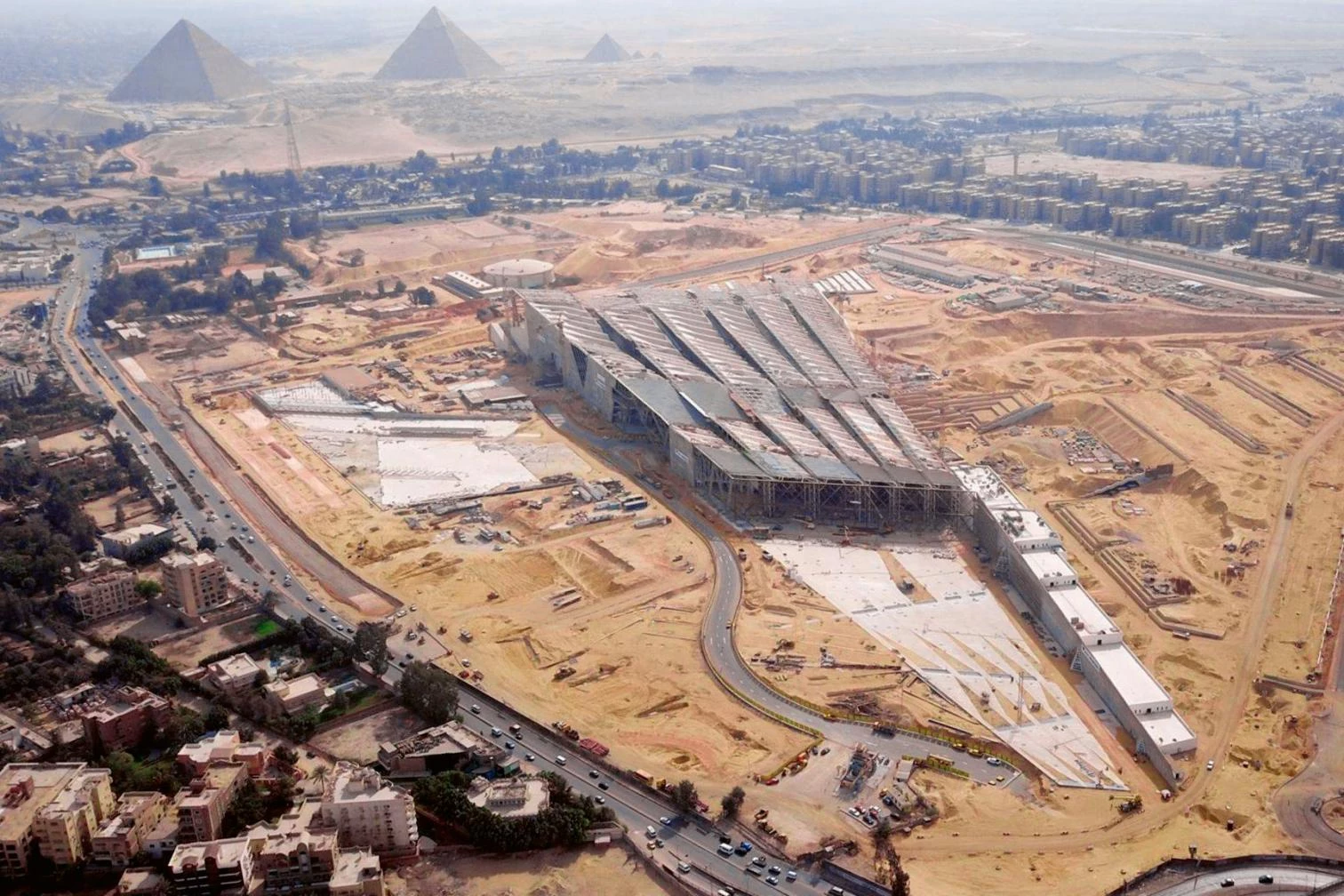
Grand Egyptian Museum in Giza © Picture Alliance/Getty
Ramses II presides the hall of the Grand Egyptian Museum, a colossal structure nearing completion on the Giza Plateau. Designed in 2002 by Heneghan Peng, the construction of what will be the largest archaeological museum in the world devoted to a single civilization is aligned with the Keops and Menkaure pyramids, and opens out to the landscaping by West 8 with a triangulated and translucent facade. Promoted by Hosni Mubarak, and delayed by the Arab Spring protests, the building that will shelter the Tutankhamun mask will be inaugurated by Abdel Fattah el-Sisi, who became president after deposing the Islamist Mohamed Morsi, chosen after the revolution that overthrew dictator Mubarak, who was also the driving force behind the Bibliotheca Alexandrina, conceived in 1987 and opened in 2002 by Snøhetta. Despite being titanic works, these two cultural headquarters pale before the great project of El-Sisi, the country’s new capital, a city of seven million under construction since 2015 on a site halfway between Cairo and Suez.
The Egypt described in The Alexandria Quartet of Lawrence Durrell or Cairo Trilogy of Naguib Mahfuz can hardly be recognized in the country that builds today these pharaonic works, closer in their ambition to the stepped, stone pyramid raised by Imhotep for Zoser 46 centuries ago than to the New Gourna of adobe built by Hassan Fathy in Luxor from 1945 on, coinciding with the time of the two series of novels. A country humiliated and plundered by Greeks, Romans, Ottomans, French, and British today reclaims the Rosetta Stone and the Nefertiti Bust, while it uses sumptuous carriages to move 22 sarcophagi with their embalmed queens and pharaohs from the old Egyptian Museum on Tahrir Square to the National Museum of Egyptian Civilization, a huge construction designed by a local architect which goes up in the first capital of Muslim Egypt, where objects from all periods of its history are displayed, and that opened in April 2021 after the Pharaohs’ Golden Parade, an event worthy of classic Hollywood set designs.
But Egypt is more than mummy parades and pyramid tourism. Its 100 million people are the key of the Arab world, and the country is the most important cultural center of Islamic civilization, both in its moderate and in its radical expressions. Egyptian was Sayyid Qutb, the theorist of Islamism whose ideas still feed Jihadist terrorism; Egyptian was Mohamed Atta, the architect trained in Cairo and Hamburg who crashed one of the 9/11 airplanes; and Egyptian too was Morsi, the only president-elect of the country, removed and imprisoned after trying to increase Islamic influence in Egypt. The two large museums opening now try to improve the cultural offer for citizens and visitors, but perhaps they are also meant to raise awareness of the millennarian Pharaonic empire to place its current situation in a historical sequence. Two decades after the destruction of the World Trade Center, which eroded the ties between the West and the Muslim world, this task becomes more urgent and necessary than ever.






